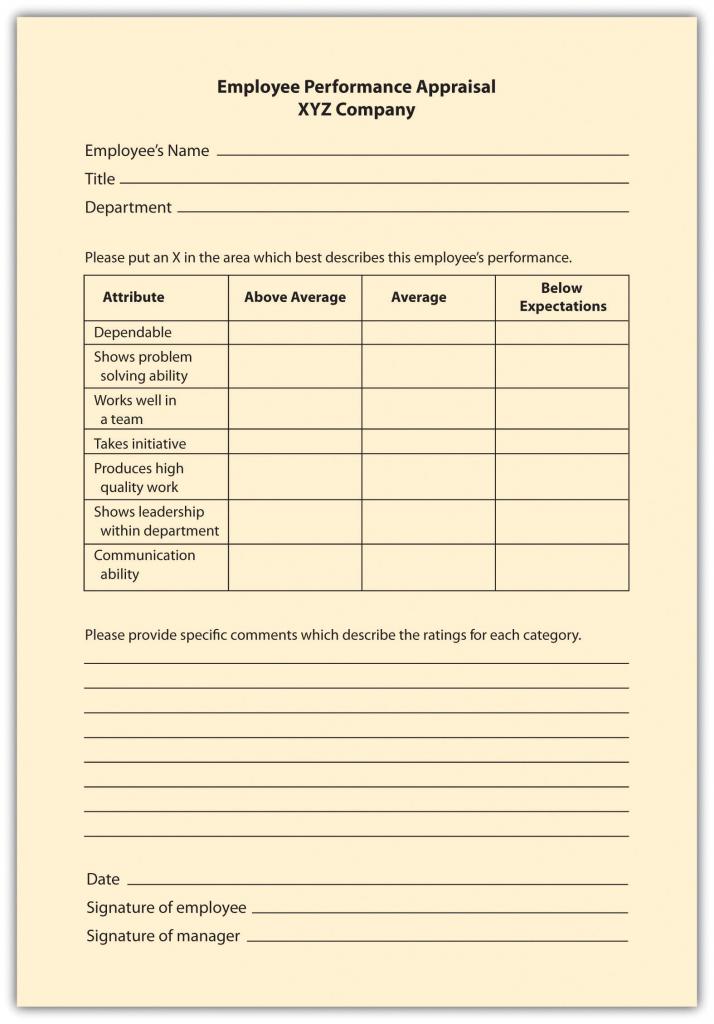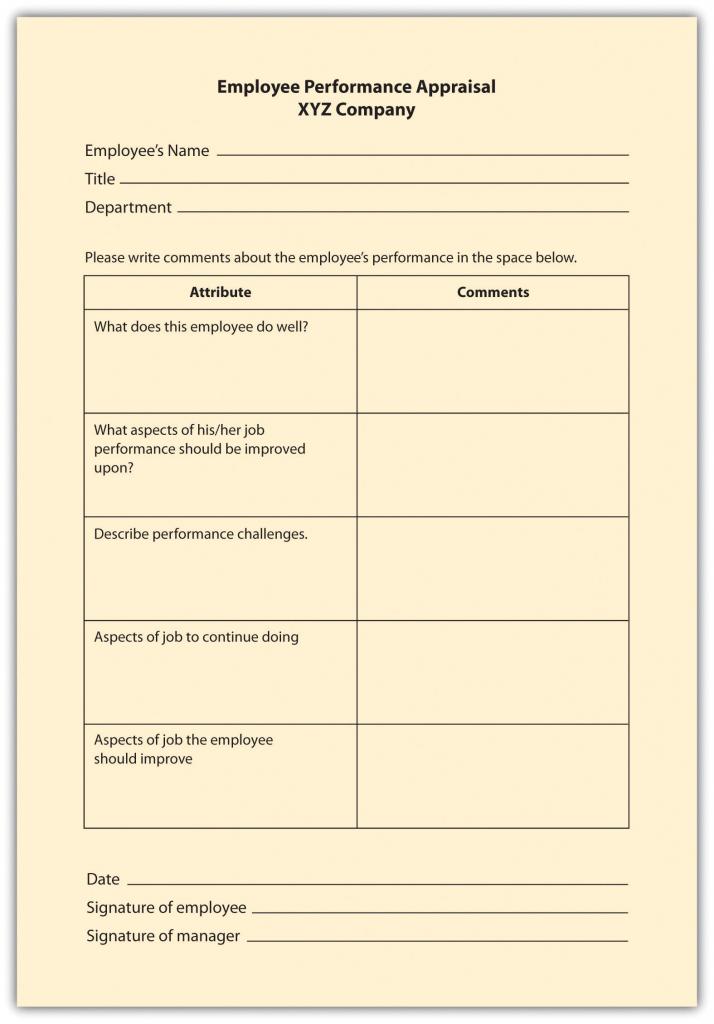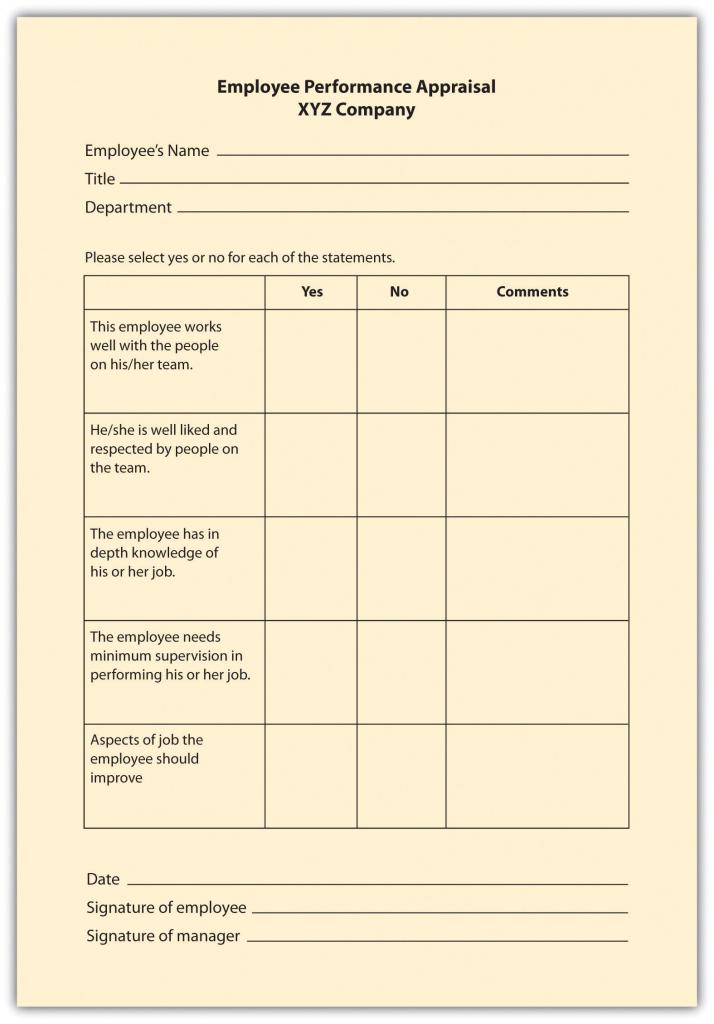11.2: Appraisal Methods
- Page ID
- 8285
Learning Objective
- Be able to describe the various appraisal methods.
It probably goes without saying that different industries and jobs need different kinds of appraisal methods. For our purposes, we will discuss some of the main ways to assess performance in a performance evaluation form. Of course, these will change based upon the job specifications for each position within the company. In addition to industry-specific and job-specific methods, many organizations will use these methods in combination, as opposed to just one method. There are three main methods of determining performance. The first is the trait method, in which managers look at an employee’s specific traits in relation to the job, such as friendliness to the customer. The behavioral method looks at individual actions within a specific job. Comparative methods compare one employee with other employees. Results methods are focused on employee accomplishments, such as whether or not employees met a quota.
Within the categories of performance appraisals, there are two main aspects to appraisal methods. First, the criteria are the aspects the employee is actually being evaluated on, which should be tied directly to the employee᾿s job description. Second, the rating is the type of scale that will be used to rate each criterion in a performance evaluation: for example, scales of 1–5, essay ratings, or yes/no ratings. Tied to the rating and criteria is the weighting each item will be given. For example, if “communication” and “interaction with client” are two criteria, the interaction with the client may be weighted more than communication, depending on the job type. We will discuss the types of criteria and rating methods next.
Graphic Rating Scale
The graphic rating scale, a behavioral method, is perhaps the most popular choice for performance evaluations. This type of evaluation lists traits required for the job and asks the source to rate the individual on each attribute. A discrete scale is one that shows a number of different points. The ratings can include a scale of 1–10; excellent, average, or poor; or meets, exceeds, or doesn’t meet expectations, for example. A continuous scale shows a scale and the manager puts a mark on the continuum scale that best represents the employee’s performance. For example:
| Poor | — | — | — | — | — | — | — | — | Excellent |
The disadvantage of this type of scale is the subjectivity that can occur. This type of scale focuses on behavioral traits and is not specific enough to some jobs. Development of specific criteria can save an organization in legal costs. For example, in Thomas v. IBM, IBM was able to successfully defend accusations of age discrimination because of the objective criteria the employee (Thomas) had been rated on.
Many organizations use a graphic rating scale in conjunction with other appraisal methods to further solidify the tool’s validity. For example, some organizations use a mixed standard scale, which is similar to a graphic rating scale. This scale includes a series of mixed statements representing excellent, average, and poor performance, and the manager is asked to rate a “+” (performance is better than stated), “0” (performance is at stated level), or “−” (performance is below stated level). Mixed standard statements might include the following:
- The employee gets along with most coworkers and has had only a few interpersonal issues.
- This employee takes initiative.
- The employee consistently turns in below-average work.
- The employee always meets established deadlines.
An example of a graphic rating scale is shown in Figure 11.1 “Example of Graphic Rating Scale”.
Essay Appraisal
In an essay appraisal, the source answers a series of questions about the employee’s performance in essay form. This can be a trait method and/or a behavioral method, depending on how the manager writes the essay. These statements may include strengths and weaknesses about the employee or statements about past performance. They can also include specific examples of past performance. The disadvantage of this type of method (when not combined with other rating systems) is that the manager’s writing ability can contribute to the effectiveness of the evaluation. Also, managers may write less or more, which means less consistency between performance appraisals by various managers.
Checklist Scale
A checklist method for performance evaluations lessens the subjectivity, although subjectivity will still be present in this type of rating system. With a checklist scale, a series of questions is asked and the manager simply responds yes or no to the questions, which can fall into either the behavioral or the trait method, or both. Another variation to this scale is a check mark in the criteria the employee meets, and a blank in the areas the employee does not meet. The challenge with this format is that it doesn’t allow more detailed answers and analysis of the performance criteria, unless combined with another method, such as essay ratings. A sample of a checklist scale is provided in Figure 11.3 “Example of Checklist Scale”.
Figure 11.1 Example of Graphic Rating Scale

Figure 11.2 Example of Essay Rating

Figure 11.3 Example of Checklist Scale


